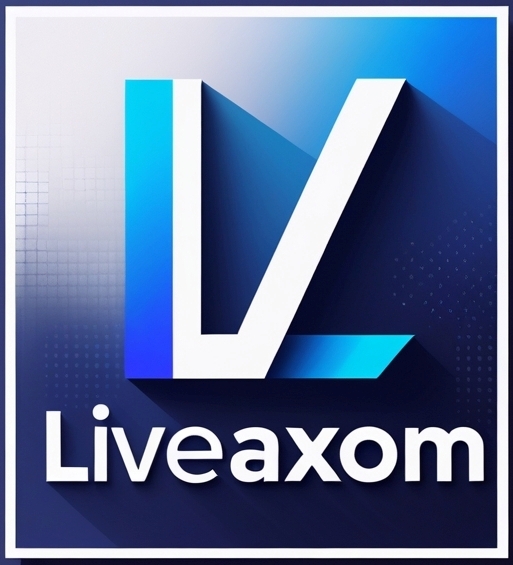Purchasing a home is a major milestone, and understanding home loans is essential for navigating the process, especially for first-time buyers in 2025. With median home prices at $398,400 in February 2025, up 3.8% from last year, and 30-year fixed mortgage rates averaging 6.67% in April 2025, the housing market presents both opportunities and challenges.
This guide provides a comprehensive overview of home loans, covering types, qualification criteria, the home buying process, key terms, and practical tips to help you secure the right loan and achieve homeownership.
Current Housing Market Trends (2025)
The 2025 housing market shows signs of stabilization after years of volatility. Home prices have risen, with the median existing home sale price reaching $398,400 in February 2025, a 3.8% year-over-year increase. However, price growth has slowed in some regions, and housing inventory has increased by 17% compared to 2024, offering more options for buyers. Mortgage rates, which peaked at 7.04% in January 2025, have eased to 6.67% for a 30-year fixed-rate loan as of early April, with forecasts suggesting rates may average 7.90% by year-end due to potential Federal Reserve rate cuts. These trends shape loan choices and affordability, making it critical to understand your options.
What is a Home Loan?
A home loan, or mortgage, is a financial agreement where a lender provides funds to purchase a home, which you repay over time with interest. Loan terms typically range from 15 to 30 years, and the funds can be used for buying a new or resale property, refinancing, or home improvements. In 2025, various loan types cater to diverse needs, from first-time buyers to those purchasing high-value homes.
Types of Home Loans
Several home loan types are available in 2025, each with unique features and eligibility criteria. Below is a detailed breakdown:
| Loan Type | Description | Key Features |
|---|---|---|
| Conventional | Not government-backed | Requires 620+ credit score, 3-20% down payment |
| FHA | Insured by Federal Housing Administration | 3.5% down with 580 credit score, MIP required |
| VA | For veterans and military | No down payment, no PMI, competitive rates |
| USDA | For rural homebuyers | No down payment, income and location restrictions |
| Jumbo | For high-value properties | 700+ credit score, 10-20% down payment |
| ARM | Adjustable interest rate | Lower initial rates, adjusts after fixed period |
| Fixed-Rate | Constant interest rate | Predictable payments, 15- or 30-year terms |
| Home Equity | Borrow against home equity | Fixed-rate loan or variable-rate HELOC |
| FHA 203(k) | For purchase and renovation | Finances home purchase and repairs |
| Construction | For building a new home | Short-term, converts to permanent mortgage |
| Bridge | For buying before selling current home | Short-term, higher interest rates |
| Reverse | For homeowners 62+ | No monthly payments, repaid upon sale |
Conventional Loans
Offered by private lenders, these loans require a credit score of at least 620 and a down payment of 3-20%. A 20% down payment avoids private mortgage insurance (PMI). They suit borrowers with strong credit and stable income.
FHA Loans
Insured by the Federal Housing Administration, FHA loans allow down payments as low as 3.5% with a 580 credit score or 10% with a 500 score. They require mortgage insurance premiums (MIP) but are ideal for first-time buyers or those with lower credit.
VA Loans
Available to veterans, active-duty service members, and eligible spouses, VA loans offer no down payment, no PMI, and competitive rates. A funding fee may apply, which can be rolled into the loan.
USDA Loans
Designed for rural homebuyers with low to moderate incomes, USDA loans require no down payment and offer below-market rates. Eligibility depends on income and property location.
Jumbo Loans
For homes exceeding the 2025 conforming loan limit of $806,500 ($1,209,750 in high-cost areas), jumbo loans require a 700+ credit score and 10-20% down payment. They carry higher risk for lenders, leading to stricter criteria.
Adjustable-Rate Mortgages (ARMs)
ARMs start with a fixed rate for a period (e.g., 5 years in a 5/1 ARM) then adjust annually based on market conditions. They offer lower initial rates but carry the risk of future increases.
Fixed-Rate Mortgages
These loans maintain a constant interest rate, typically for 15 or 30 years, ensuring predictable payments. They’re ideal for buyers planning to stay long-term.
Home Equity Loans and HELOCs
Home equity loans provide a lump sum with a fixed rate, while Home Equity Lines of Credit (HELOCs) offer a revolving credit line with variable rates, averaging 7.90% by late 2025. Both allow borrowing against home equity.
FHA 203(k) Loans
These loans finance both the purchase and renovation of a home, with standard and streamline options for varying repair needs.
Construction Loans
Used to build a new home, these short-term loans convert to permanent mortgages after construction, often with higher rates during the building phase.
Bridge Loans
These short-term loans help buyers purchase a new home before selling their current one, but they come with higher interest rates.
Reverse Mortgages
For homeowners aged 62+, reverse mortgages convert home equity into cash without monthly payments. The loan is repaid when the home is sold or the owner passes away.
In India, additional loan types include:
- Home Purchase Loans: For buying new or resale properties.
- Home Construction Loans: For building a home.
- Plot Loans: For purchasing land.
- Home Renovation Loans: For home improvements.
- Balance Transfer Loans: To switch to a lender with better terms.
- Top-Up Loans: Additional funds for other purposes.
- Pradhan Mantri Awas Yojana (PMAY): Offers subsidies for eligible borrowers.
How to Qualify for a Home Loan
Lenders assess several factors to determine your eligibility for a home loan:
- Credit Score
- A score of 620 or higher is typically required for conventional loans, while FHA loans accept scores as low as 500 with a 10% down payment. Higher scores secure better rates.
- Down Payment
- Conventional loans require 3-20% down, with 20% avoiding PMI. FHA loans need 3.5%, while VA and USDA loans require none. Some lenders, like Rocket Mortgage, offer programs like ONE+ with 1% down and a 2% grant.
- Debt-to-Income (DTI) Ratio
- Your DTI, calculated as monthly debt payments divided by gross monthly income, should ideally be 43% or less. Some programs allow higher ratios.
- Income and Employment
- Lenders require proof of stable income, typically two years of employment history. Self-employed borrowers need additional documentation, like tax returns.
- Assets
- You must show sufficient assets for the down payment, closing costs (2-5% of the loan), and reserves for several months of payments.
- Property Appraisal
- The lender appraises the property to ensure its value supports the loan amount.
The Home Buying Process
- Get Pre-Approved
- Obtain a pre-approval letter from a lender to determine your budget and strengthen your offer. This involves submitting financial documents for review.
- Find a Real Estate Agent
- An agent helps you find homes, negotiate offers, and navigate the process.
- House Hunting
- Search for homes within your budget, considering location, size, and amenities.
- Make an Offer
- Submit an offer, which may include contingencies like financing or inspection.
- Home Inspection
- Hire a professional to inspect the home for structural or system issues.
- Loan Application
- Submit a formal application with documents like pay stubs, tax returns, and bank statements.
- Underwriting
- The lender reviews your application, credit, and appraisal to approve or deny the loan.
- Closing
- Sign final paperwork, pay closing costs, and take ownership of the home.
Understanding Mortgage Terms
- Interest Rate: The percentage charged on the loan amount, affecting monthly payments.
- Annual Percentage Rate (APR): Includes interest and fees, reflecting the total cost of borrowing.
- Down Payment: The upfront payment, typically 3-20% of the home price.
- Closing Costs: Fees (2-5% of the loan) for appraisal, title, and other services.
- Private Mortgage Insurance (PMI): Required for conventional loans with less than 20% down.
- Loan Term: The repayment period, commonly 15 or 30 years.
Tips for First-Time Homebuyers
- Save for Down Payment and Closing Costs
- Aim for 5-20% down to reduce loan costs and avoid PMI.
- Improve Your Credit Score
- Pay bills on time, reduce debt, and correct credit report errors.
- Get Pre-Approved
- Pre-approval clarifies your budget and signals seriousness to sellers.
- Research Loan Options
- Compare loan types to find the best fit for your needs.
- Work with a Real Estate Agent
- An agent guides you through the process and negotiates on your behalf.
- Budget for Closing Costs
- Plan for 2-5% of the loan amount in additional fees.
- Take Your Time
- Avoid rushing to ensure you find the right home and loan terms.
For more financial planning tips, explore How to Qualify for a Personal Loan or Loans You Should Know About in 2025.
Common Mistakes to Avoid
- Not Shopping Around
- Compare at least three lenders for the best rates and terms.
- Ignoring Closing Costs
- Budget for these fees to avoid financial strain.
- Skipping the Home Inspection
- Inspections uncover issues that could affect the home’s value.
- Overextending Your Budget
- Ensure monthly payments are 25% or less of your take-home pay.
- Not Understanding Loan Terms
- Review all terms to avoid surprises like adjustable rates or PMI.
Resources for Further Information
- Consumer Financial Protection Bureau: Guides on mortgages and loan shopping.
- Federal Housing Administration: Information on FHA loans.
- Department of Veterans Affairs: Details on VA loans.
- U.S. Department of Agriculture: Rural housing programs.
- Local housing authorities for down payment assistance programs.
Related Articles
- How AI is Transforming Industries: Learn how technology, including real estate, is evolving.
- Top AI News 2025: Stay updated on AI trends impacting finance.
- How to Apply for a Scholarship: Explore funding options for education.
- Top 5 Cryptocurrencies to Watch This Week: Diversify your financial knowledge.

